Reasons for its appearance
Before you start fighting mold on the walls, you need to find and eliminate the cause of its appearance – otherwise, even professional help will not guarantee results.
- High humidity. This is not only about poor ventilation in the bathroom or kitchen, but also local leaks, dampness of individual areas.
- Low temperature. In unheated rooms with frozen walls, the appearance of mold is almost inevitable. If there is heating, but the system is damaged or broken, mold may also appear.
- Stagnant air. Using non-hygroscopic finishing materials without proper preliminary treatment of walls from mold can also cause it to appear.
The problem in your particular case may be one of the listed options or several at once, but the fact remains: dampness, cold and lack of air renewal are necessary for the fungus to “bloom” and reproduce.
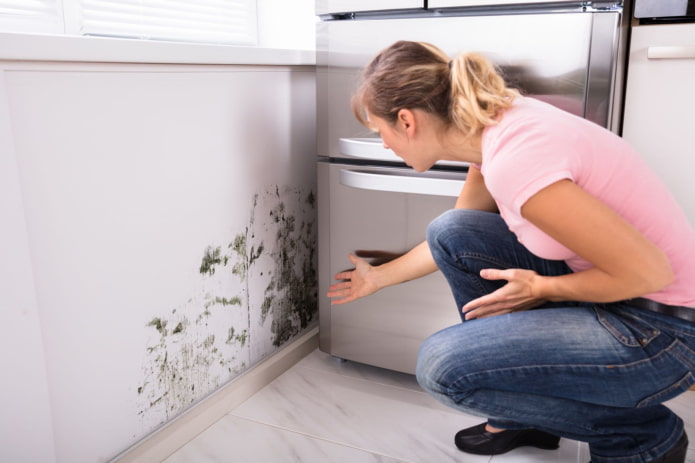
What types are there and why are they dangerous?
Another fact that you need to know in order to remove mold from the walls is its type. The most common are:
- Black mold. The affected areas are covered with dark spores of different sizes: these are the ones most often found in residential premises. The Aspergillius Niger fungus feeds on organic matter and thrives in high humidity: it can grow on plaster, brick, concrete, wallpaper, and even on plastic panels.
- Green mold. Penicillium loves not only bread and other food products, their spores can often be found on plastered and painted surfaces.
- Blue mold. It is most dangerous for natural wood and chipboard materials (chipboard, laminated chipboard, fiberboard). It is most often found in wooden houses.
- House fungus. Another pest of log houses – it differs from the previous species not only in appearance, but also in its effects. Serpula lacrymans is aggressive – by destroying wood from the inside, it can destroy the structure itself.
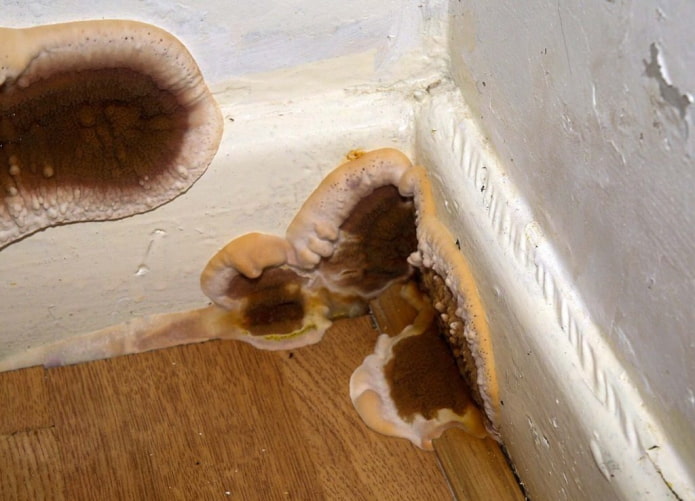
If you think that mold removal can wait – we hasten to convince you otherwise. It is necessary to remove mold from the walls in the apartment not only to restore the aesthetic appearance, but also to care for the health of household members. After all, constant inhalation of microorganisms leads to many unpleasant diseases – allergies or even asthma.
How to get rid of mold?
As you already understand, the task of removing mold from the walls is of primary importance upon its detection. If the outbreak is small, you can try to remove the mold with folk remedies. When there is no time for experiments, immediately use high-quality antifungal products from the store.
Using improvised means
Vinegar
The most versatile products available in every home are vinegar and soda. They are used for cleaning, washing clothes and in the fight against fungal infections. Fungi do not survive in an acidic environment – this fact is the basis of this method.
- Take a 9% solution of ordinary table vinegar or dilute 70% essence with water yourself.
- Pour the composition into a spray bottle, apply generously to the infected area, leave for 30-60 minutes (depending on the severity). The effectiveness will be higher if you spray not only the source, but also spray the air in the room – after all, fungus spores can simply fly along with the dust.
- When the time is up, carefully brush it, removing the fungi. And rinse thoroughly with a chlorine-containing agent.
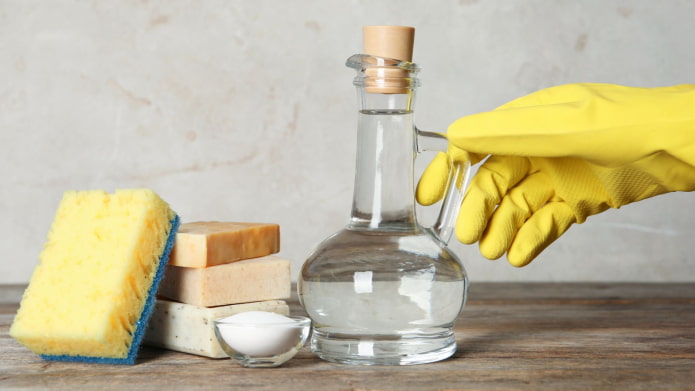
Soda
The chemical compound NaHCO3 or sodium bicarbonate is an alkali that, unlike vinegar, does not have an unpleasant odor, but copes no less well with mold on walls.
- Dilute 2-3 tablespoons in 200 ml of lukewarm water, apply to the infection with a sponge or rag.
- You can wash it off after a few hours (from 2 to 24), remove the remaining plaque with a clean damp cloth, leave to dry.
Important! Brushes, sponges, brushes, rags after contact with mold on the walls must be disposed of!
Bleach
Any chlorine-containing product: laundry detergent with a bleaching effect or for cleaning plumbing, has not only antibacterial properties, but is also suitable for treating a wall with mold.
Be careful when working with chlorine: to avoid burns, you need to protect your hands with gloves, your lungs with a mask from fumes, and your eyes with glasses.
- Use a brush, sponge, rag or spray to spread the bleach over the wall (no need to dilute the product).
- Wait 15 minutes, remove visible spores with a brush, wash the work area and ensure good ventilation to neutralize the odor and dry the treated area.
Tea tree oil
Tea tree is a natural antiseptic. The natural preparation works slower than chemical analogues, but it will not cause you or your loved ones any harm.
- To get rid of mold on the wall, prepare the following composition: 1 tsp. oil per 0.5 l of clean water.
- Shake well in a spray bottle, spray on the affected area.
- Repeat 2-3 times for 2-3 days, waiting until completely dry between applications.
Copper sulfate
Copper sulfate is toxic, so as a mold remedy in an apartment it is suitable only if the room is isolated.
The first 48 hours of being in a room where the walls are treated with copper sulfate is simply dangerous.
Proportions of the solution: 10-30 g of dry matter per 1 liter of water. Apply like a regular primer – with a roller or brush. One layer dries for about 6 hours, layering up to 5 times is allowed. After the last layer, wait 2 days, open the windows in ventilation mode, clean the surfaces.
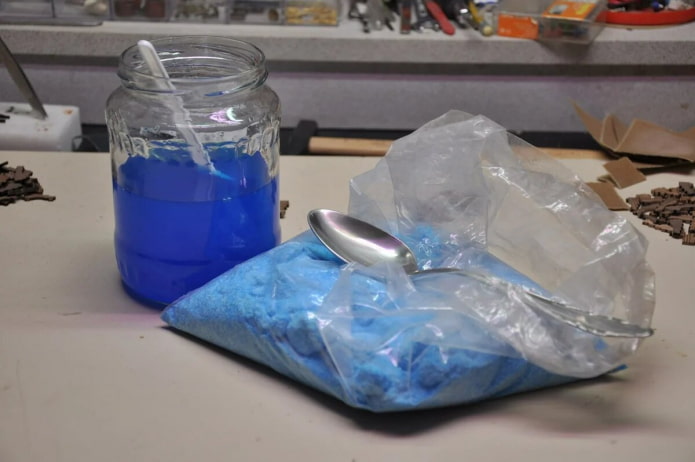
Ammonia
Ammonia will be effective if you treat non-absorbent surfaces with it: plastic windows, glazed tiles, glass panels, mirrors painted with oil paint. The instructions are very simple:
- dilute ammonia 1 to 1 with water,
- spray on the mold,
- wait a little and wash off.
The procedure can be repeated 2-3 times if you can’t remove all the spots at once.
Hydrogen peroxide
Bottles with 3-6% peroxide can be found in any pharmacy. They cost pennies, have no smell, and do not cause much harm to a person. But mold does not like this disinfectant, so we will use this.
- To remove mold from walls, pour a 3% solution in its pure form into a sprayer, wet the stains with it, leave for 10-15 minutes.
- Then everything is as usual: remove spores with a brush or spatula, rinse with water or a chlorine-containing agent.
Laundry soap
If acids work better when they are left on the surface to act, then, oddly enough, you need to wash with soap. Or rather, rub. With a generously soaped hard sponge, an old washcloth or a rough rag, it is easy to clean walls or objects covered with indelible stains from fungus.
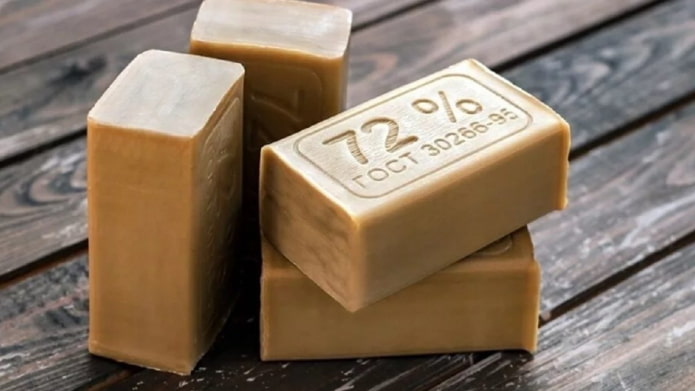
White spirit
Primers or paints that prevent the formation of mold, as well as fungifluids (products for removing existing lesions) mostly contain Stoddard solvent. If it is considered an excellent antiseptic additive all over the world, why not try using the substance in its pure form?
Put on gloves, wet a rag with white spirit, apply generously, wait about an hour – remove everything unnecessary.
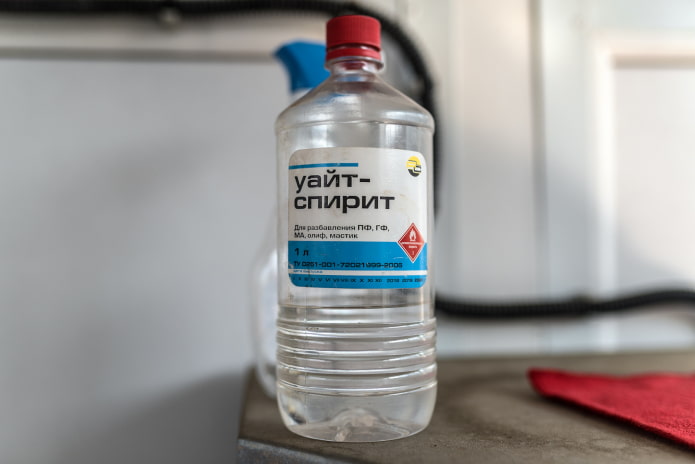
Borax
This salt is literally made for cleaning and mold is not a difficult task for it. Mix half a glass of borax in 1-1.5 liters of water, dip a brush into the solution and start actively rubbing the infected areas.
It is very important to protect your respiratory system, cover furniture, indoor plants, decor, food, etc. because the spores will start flying around the room, settling in new places and infecting them.
With the help of professional products
Prosept
Two-phase phongifluid – FUNGI CLEAN contains chlorine and acids, it is required to remove mold that has already appeared from the walls. Antiseptic FUNGI STOP is necessary to combat its further appearance and spread.
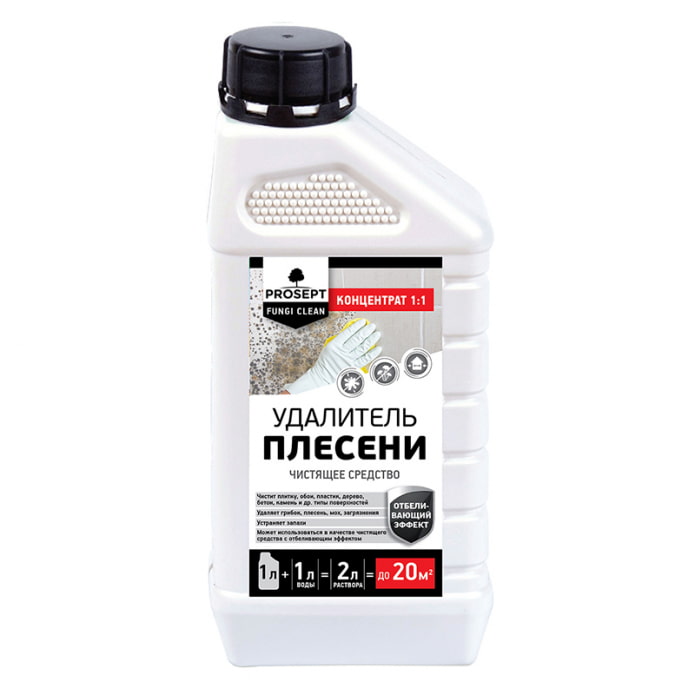
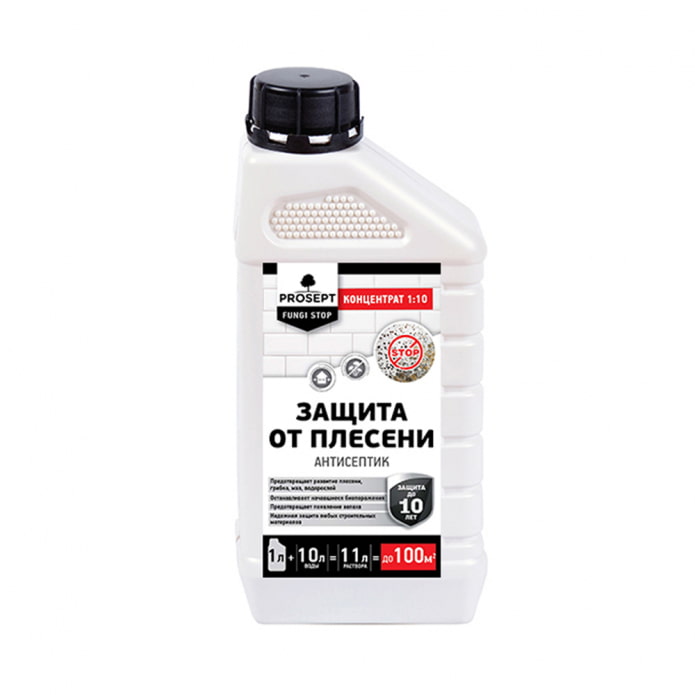
Neomid
Also contains chlorine, works faster and best on mineral coatings with a loose structure: deeply penetrates into building materials, allows you to comprehensively combat mold that spreads from the inside and outside.
All work can be easily done independently without the help of specialists, it is enough to read the manufacturer’s instructions.
Glutoclean Pufas
Unlike the previous methods, it is considered environmentally friendly and safe – this remover does not contain chlorine. The active substance is replaced by oxygen, which reacts with the fungus and destroys it.
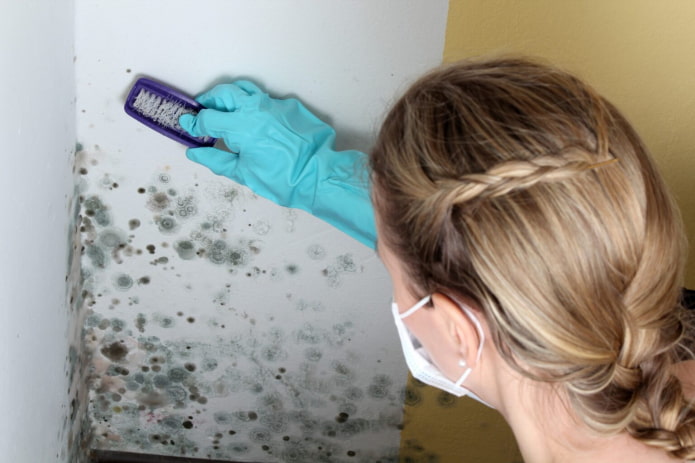
Important! When working with any means – ready-made or homemade, do not forget to protect your skin, respiratory tract, be sure to ventilate the room.
Prevention
Fighting the consequences is always longer and more difficult than taking measures to prevent contamination of the walls. In order to avoid constantly treating surfaces and breathing in mold, it is necessary to neutralize the omissions that create a favorable atmosphere for its growth.
- High-quality insulation. It is impossible to get rid of mold forever in a cold room. Take care of the insulation of the room or building – finishing materials must be laid from the street and the house. This will help to avoid the accumulation of condensation. Heating is organized using a radiator or a warm floor system.
- Thoughtful waterproofing. Often the source of mold spread is the place of a leak in the roof, faucet, or bathroom from the upper floor. To protect yourself from further worries, lay waterproofing during the finishing of the apartment.
- Regular ventilation. Air circulation in itself (while maintaining high humidity and low temperature) does not guarantee getting rid of serious infections, but is quite suitable for removing their remnants. Ventilate rooms with windows as often as possible, and if there are no windows, install a forced-air exhaust system.
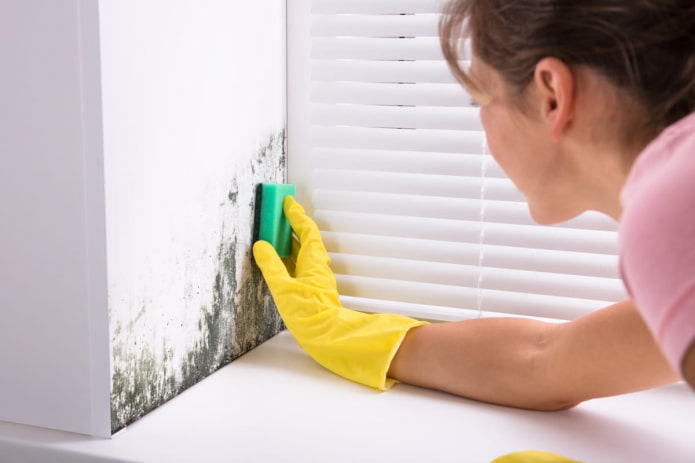
Unfortunately, mold usually does not disappear without a trace: take preventive measures, periodically check the cleaned areas for new infections. Your task is to see the emerging mycelium and remove it at the initial stage, preventing it from spreading again.
Now reading:
- Your Essential Guide to Buying a Citroën Used Car
- Warm, daylight or cold light? Tips for choosing and using in the interior.
- Children’s pillows: recommendations for selection and types of fillers
- Features of chalet-style house design (32 photos) – facade, roof and superstructures.
- Three easy and effective ways to fix a cabinet hinge that has been torn out.